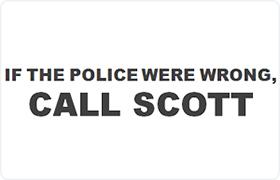Seaton Felony Lawyer, Illinois
Sponsored Law Firm
-
 x
x

Click For More Info:
-
Law Offices of Scott T. Kamin
53 W. Jackson Blvd Suite 1057 Chicago, IL 60604» view mapCriminal Defense & Felony If The Police Were Wrong, CALL SCOTT
My goal as your criminal defense lawyer is to help you minimize the consequences you face. I have extensive outside resources and an experienced staff on my side.
800-963-2980
Not enough matches for Seaton Felony lawyer.
Below are all Seaton Criminal lawyers.
Thomas R. Siegel
Real Estate, Traffic, Criminal, Products Liability, Medical Malpractice
Status: In Good Standing
James G. Baber
Personal Injury, Medical Malpractice, Criminal, Workers' Compensation
Status: Inactive
 Scott Kamin Chicago, IL
Scott Kamin Chicago, IL Practice AreasExpertise
Practice AreasExpertise
